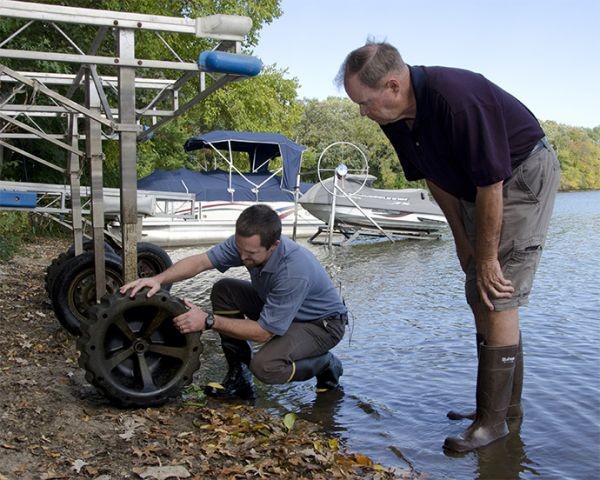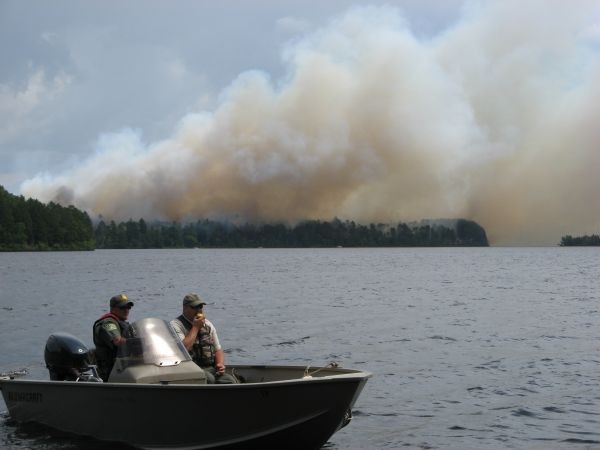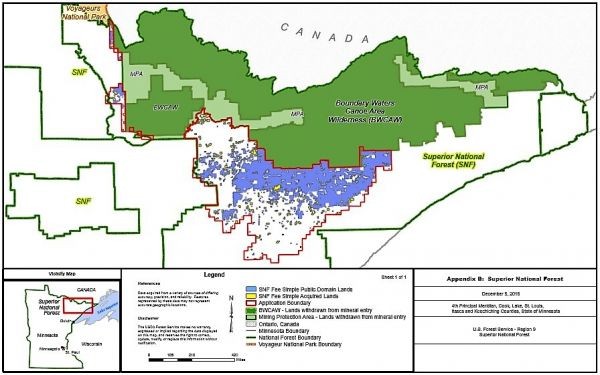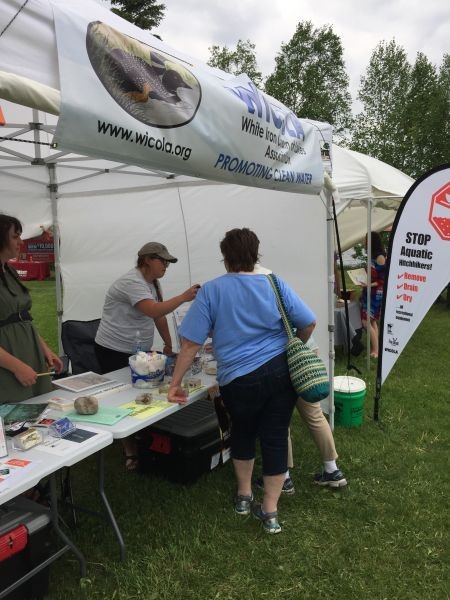By Minnesota Pollution Control Agency
Summer is here, and while water enthusiasts and pets enjoy swimming and boating when the weather is calm and sunny, these conditions are also perfect for growing blue-green algae, which can be harmful to both people and animals.
Last summer, blue-green algal blooms were reported in lakes across the state, from near the Iowa border all the way to the Canadian border. The Minnesota Pollution Control Agency (MPCA) and Minnesota Department of Health (MDH) staff jointly investigated two reported human illnesses and multiple dog deaths following exposure to blue-green algae. Blooms typically begin to form this month as the weather heats up, but with the mild spring weather this year, blooms have already been spotted.
People and pets at risk
The appearance of a blue-green algal bloom and the unpleasant smell that occasionally accompanies a bloom typically keep most people out of the water. However, people can become sick after they swim, boat, water ski, or bathe in water that has toxic blue-green algae. During these activities, people are exposed to the toxins by swallowing or having skin contact with water or by breathing in tiny droplets of water in the air. “In most people, symptoms are mild and may include vomiting, diarrhea, rash, eye irritation, cough, sore throat, and headache,” says MDH Epidemiologist Stephanie Gretsch.
Dogs are at particular risk, as they are more likely to wade in the areas of a lake where algal scum accumulates. Dogs are usually exposed to larger amounts of toxins from algae because they tend to swallow more water than humans while swimming, especially when retrieving toys from the water. They also lick their coats upon leaving the water, swallowing any algae that may be on their fur. Dogs exposed to blue-green algae can experience symptoms such as vomiting, diarrhea, rash, difficulty breathing, general weakness, liver failure, and seizures. If your dog experiences any of these symptoms after visiting a lake, seek veterinary care immediately. In the worst cases, blue-green algae exposure can cause death.
Tips to protect yourself and your pets
Not all blue-green algae are toxic, but there is no way to tell whether a bloom is toxic by looking at it. Harmful blooms often look like pea soup, green paint, or floating mats of scum and sometimes have a bad smell. However, harmful blooms aren’t always large and dense and can sometimes cover small portions of the lake with little visible algae present. Before you or your children or pets enter the water, take a closer look at the lake and check for algae in the water or on shore to help determine if a bloom recently happened.
“If it looks and smells bad, don’t take a chance. We usually tell people: If in doubt, stay out,” says Pam Anderson, MPCA Water Quality Monitoring Supervisor. “If you’re not sure, it’s best for people and pets to stay out of the water.” If you do come into contact with blue-green algae, wash off with fresh water immediately, paying special attention to the areas your swim suit covers. Rinse off pets with fresh water if you think they swam in water where blue-green algae were present.
Addressing the algae problem
There are currently no short-term solutions to fix a blue-green algal bloom. Once a bloom occurs, the only option is to wait for the weather to change to disrupt the algae’s growth. “With intermittent rain, followed by high temperatures, blue-green algal blooms will be common on many Minnesota lakes this summer,” Anderson says.
The key to solving algae problems is to improve overall water quality by reducing how much phosphorus gets into lakes. Phosphorus is a nutrient that encourages plant growth, and it is present in soil and plants. Runoff from urban and agricultural land contains phosphorus. Excess phosphorus in lakes provides the food necessary to produce algal blooms. Aside from limiting applications of fertilizers that contain phosphorus, homeowners can help protect our lakes by sweeping up lawn clippings and soil off sidewalks and pavement, and cleaning up pet waste, so that rain storms don’t wash the material into nearby lakes and rivers.
More information on blue-green algae, including how to report a possible human or animal illness, is available on the MDH Harmful Algal Blooms website.
Broadcast version
The Minnesota Pollution Control Agency and the Minnesota Department of Health are advising the public to stay out of algae-laden water. This year’s mild spring weather has created ideal conditions for algal blooms.
Certain species of blue-green algae contain potent toxins that can quickly become deadly to both people and animals. Keep pets and children away from waters with a pea soup or green paint appearance. Water may also have a foul odor. Symptoms can include vomiting, diarrhea, headache, eye irritation, and seizures. If you or your pets experience these symptoms, seek medical or veterinary assistance immediately.








 Volunteers from WICOLA and Partner Organizations spoke with hundreds of visitors at the 2017 Annual Blueberry Festival. Visitors to the booth welcomed the information provided about the spread and prevention of aquatic invasive species, and water monitoring in WICOL and surrounding lakes throughout the watershed.
Volunteers from WICOLA and Partner Organizations spoke with hundreds of visitors at the 2017 Annual Blueberry Festival. Visitors to the booth welcomed the information provided about the spread and prevention of aquatic invasive species, and water monitoring in WICOL and surrounding lakes throughout the watershed. Rusty crawfish has been found to graze heavily on germinating aquatic vegetation, and are capable of displacing and reducing the diversity of native aquatic plants (aquatic plants). Introductions of Rusty crawfish have shown detrimental impacts on aquatic plant populations around the littoral zone of lake systems. In some instances, reductions of aquatic plant populations by as much as 80% have occurred.
Rusty crawfish has been found to graze heavily on germinating aquatic vegetation, and are capable of displacing and reducing the diversity of native aquatic plants (aquatic plants). Introductions of Rusty crawfish have shown detrimental impacts on aquatic plant populations around the littoral zone of lake systems. In some instances, reductions of aquatic plant populations by as much as 80% have occurred.



